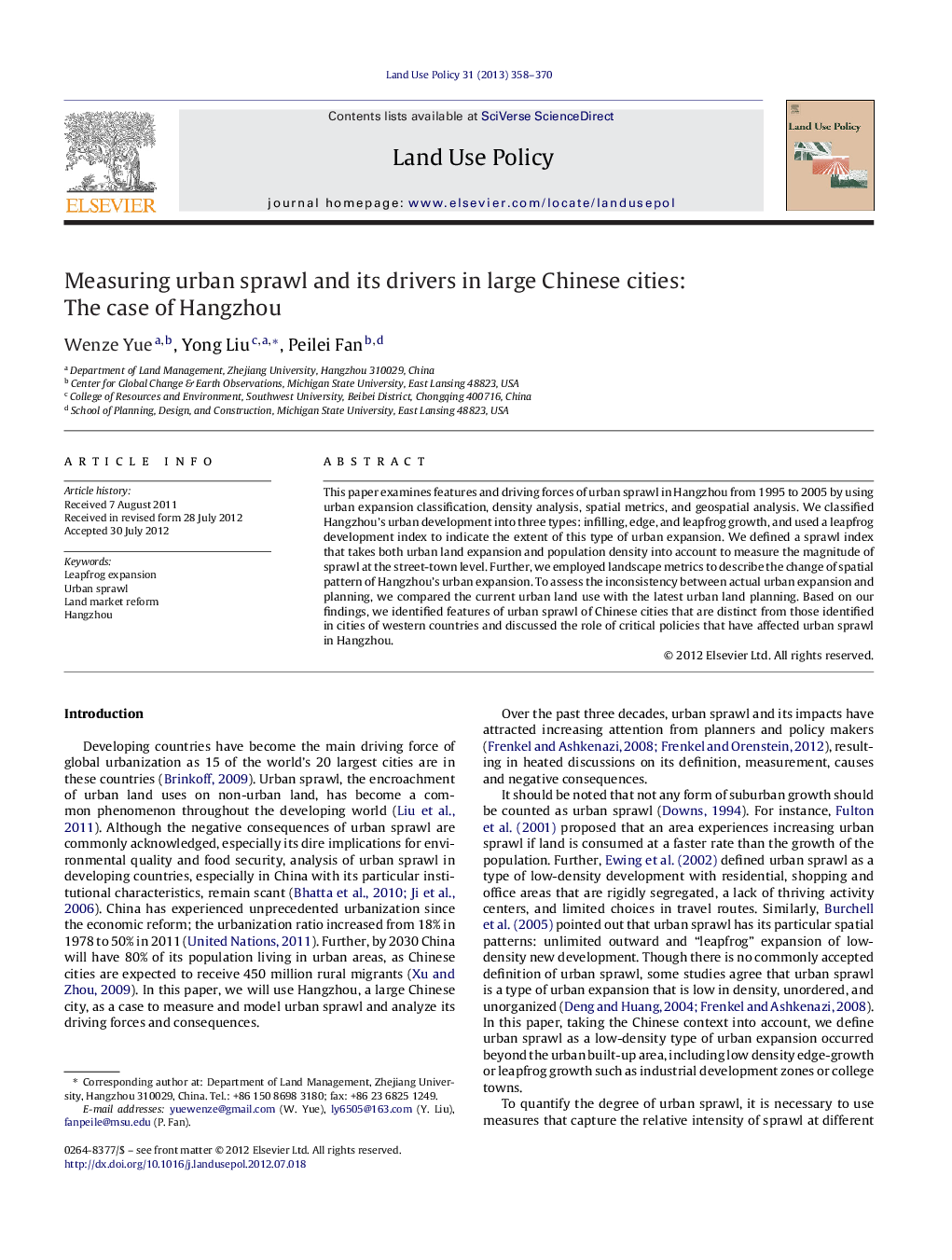| Article ID | Journal | Published Year | Pages | File Type |
|---|---|---|---|---|
| 93092 | Land Use Policy | 2013 | 13 Pages |
This paper examines features and driving forces of urban sprawl in Hangzhou from 1995 to 2005 by using urban expansion classification, density analysis, spatial metrics, and geospatial analysis. We classified Hangzhou's urban development into three types: infilling, edge, and leapfrog growth, and used a leapfrog development index to indicate the extent of this type of urban expansion. We defined a sprawl index that takes both urban land expansion and population density into account to measure the magnitude of sprawl at the street-town level. Further, we employed landscape metrics to describe the change of spatial pattern of Hangzhou's urban expansion. To assess the inconsistency between actual urban expansion and planning, we compared the current urban land use with the latest urban land planning. Based on our findings, we identified features of urban sprawl of Chinese cities that are distinct from those identified in cities of western countries and discussed the role of critical policies that have affected urban sprawl in Hangzhou.
► We examine the urban sprawl at sub-district level in Hangzhou from 1995 to 2005. ► Leapfrog development contributed significantly to Hangzhou's urban expansion. ► Population density varied greatly in the sprawl area. ► The dual-track land system and ineffective planning has driven the urban sprawl.
